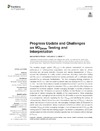Please use this identifier to cite or link to this item:
https://accedacris.ulpgc.es/jspui/handle/10553/74890
| DC Field | Value | Language |
|---|---|---|
| dc.contributor.author | Martín Rincón, Marcos | en_US |
| dc.contributor.author | López Calbet, José Antonio | en_US |
| dc.date.accessioned | 2020-10-20T10:14:48Z | - |
| dc.date.available | 2020-10-20T10:14:48Z | - |
| dc.date.issued | 2020 | en_US |
| dc.identifier.issn | 1664-042X | en_US |
| dc.identifier.other | Scopus | - |
| dc.identifier.uri | https://accedacris.ulpgc.es/handle/10553/74890 | - |
| dc.description.abstract | © Copyright © 2020 Martin-Rincon and Calbet.The maximal oxygen uptake ((Formula presented.) O2max) is the primary determinant of endurance performance in heterogeneous populations and has predictive value for clinical outcomes and all-cause mortality. Accurate and precise measurement of (Formula presented.) O2max requires the adherence to quality control procedures, including combustion testing and the use of standardized incremental exercise protocols with a verification phase preceded by an adequate familiarization. The data averaging strategy employed to calculate the (Formula presented.) O2max from the breath-by-breath data can change the (Formula presented.) O2max value by 4–10%. The lower the number of breaths or smaller the number of seconds included in the averaging block, the higher the calculated (Formula presented.) O2max value with this effect being more prominent in untrained subjects. Smaller averaging strategies in number of breaths or seconds (less than 30 breaths or seconds) facilitate the identification of the plateau phenomenon without reducing the reliability of the measurements. When employing metabolic carts, averaging intervals including 15–20 breaths or seconds are preferable as a compromise between capturing the true (Formula presented.) O2max and identifying the plateau. In training studies, clinical interventions and meta-analysis, reporting of (Formula presented.) O2max in absolute values and inclusion of protocols and the averaging strategies arise as imperative to permit adequate comparisons. Newly developed correction equations can be used to normalize (Formula presented.) O2max to similar averaging strategies. A lack of improvement of (Formula presented.) O2max with training does not mean that the training program has elicited no adaptations, since peak cardiac output and mitochondrial oxidative capacity may be increased without changes in (Formula presented.) O2max. | en_US |
| dc.language | spa | en_US |
| dc.relation.ispartof | Frontiers in Physiology | en_US |
| dc.source | Frontiers in Physiology [EISSN 1664-042X], v. 11, (Septiembre 2020) | en_US |
| dc.subject | 32 Ciencias médicas | en_US |
| dc.subject | 320501 Cardiología | en_US |
| dc.subject.other | Breath-By-Breath | en_US |
| dc.subject.other | Calibration | en_US |
| dc.subject.other | Cardiopulmonary Exercise Testing | en_US |
| dc.subject.other | Indirect Calorimetry | en_US |
| dc.subject.other | Metabolic Cart | en_US |
| dc.subject.other | Performance | en_US |
| dc.subject.other | Ramp Exercise | en_US |
| dc.subject.other | Reproducibility | en_US |
| dc.title | Progress Update and Challenges on VO2max Testing and Interpretation | en_US |
| dc.type | info:eu-repo/semantics/review | en_US |
| dc.type | Article | en_US |
| dc.identifier.doi | 10.3389/fphys.2020.01070 | - |
| dc.identifier.scopus | 85091025648 | - |
| dc.contributor.authorscopusid | 56841673800 | - |
| dc.contributor.authorscopusid | 7004323423 | - |
| dc.identifier.eissn | 1664-042X | - |
| dc.relation.volume | 11 | en_US |
| dc.investigacion | Ciencias de la Salud | en_US |
| dc.type2 | Reseña | en_US |
| dc.description.numberofpages | 8 | en_US |
| dc.utils.revision | Sí | en_US |
| dc.date.coverdate | Septiembre 2020 | en_US |
| dc.identifier.ulpgc | Sí | es |
| dc.description.sjr | 1,32 | |
| dc.description.jcr | 4,566 | |
| dc.description.sjrq | Q2 | |
| dc.description.jcrq | Q1 | |
| dc.description.scie | SCIE | |
| item.grantfulltext | open | - |
| item.fulltext | Con texto completo | - |
| crisitem.author.dept | GIR IUIBS: Rendimiento humano, ejercicio físico y salud | - |
| crisitem.author.dept | IU de Investigaciones Biomédicas y Sanitarias | - |
| crisitem.author.dept | Departamento de Educación Física | - |
| crisitem.author.dept | GIR IUIBS: Rendimiento humano, ejercicio físico y salud | - |
| crisitem.author.dept | IU de Investigaciones Biomédicas y Sanitarias | - |
| crisitem.author.dept | Departamento de Educación Física | - |
| crisitem.author.orcid | 0000-0002-3685-2331 | - |
| crisitem.author.orcid | 0000-0002-9215-6234 | - |
| crisitem.author.parentorg | IU de Investigaciones Biomédicas y Sanitarias | - |
| crisitem.author.parentorg | IU de Investigaciones Biomédicas y Sanitarias | - |
| crisitem.author.fullName | Martín Rincón, Marcos | - |
| crisitem.author.fullName | López Calbet, José Antonio | - |
| Appears in Collections: | Reseña | |
SCOPUSTM
Citations
34
checked on Jun 8, 2025
WEB OF SCIENCETM
Citations
29
checked on Jun 8, 2025
Page view(s)
120
checked on Nov 23, 2024
Download(s)
255
checked on Nov 23, 2024
Google ScholarTM
Check
Altmetric
Share
Export metadata
Items in accedaCRIS are protected by copyright, with all rights reserved, unless otherwise indicated.
